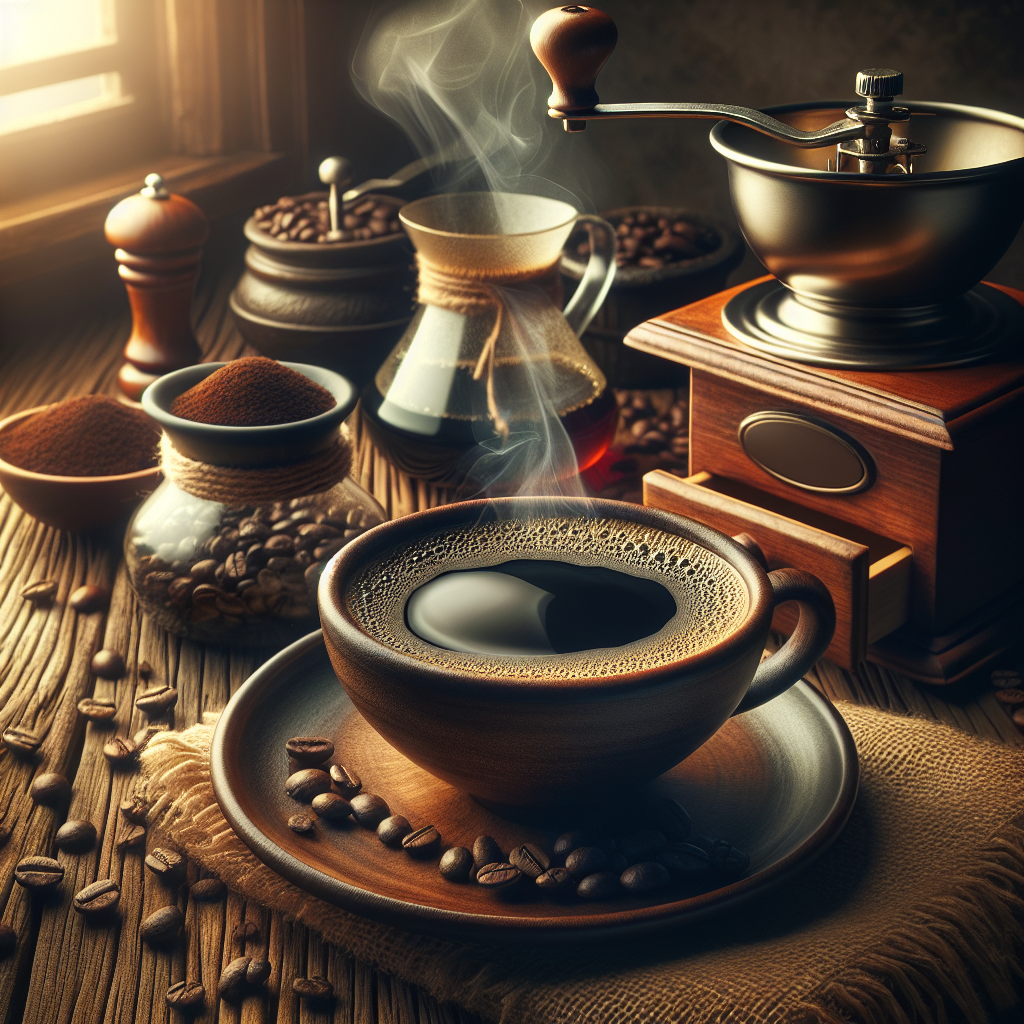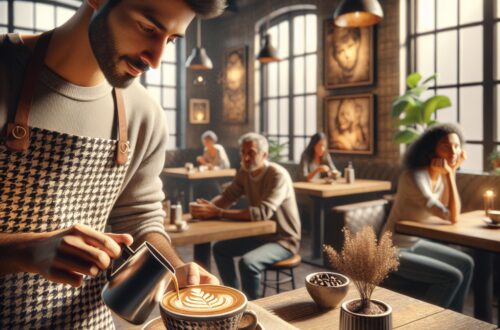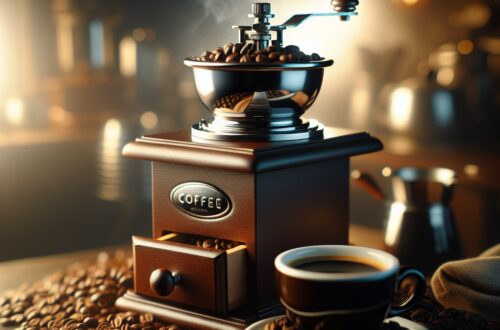The Best Way to Make Great Coffee at Home: A Comprehensive Guide
Brewing a fantastic cup of coffee at home is both an art and a science. From choosing the right beans to utilizing the perfect brewing method, each step plays a critical role in the final taste of your coffee. Let’s delve into the details to help you achieve coffee perfection every time.
To assist your journey in becoming a coffee connoisseur, visualize the diversity of brewing methods below:
| Brewing Method | Description | Flavor Profile | Brew Time |
|---|---|---|---|
| French press | Full-bodied, rich coffee with extended immersion. | Bold and robust | ~4 minutes |
| Pour-over | Offers clarity and highlights the beans’ nuanced flavors. | Clean and complex | ~3-4 minutes |
| AeroPress | Quick, versatile, and produces a clean cup. | Smooth and rich | ~30 seconds |
| Cold brew | Smooth, less acidic, and perfect for hot weather. | Mild and refreshing | ~12-24 hours (steep time) |
| Drip coffee maker | Convenient for large batches and hands-off brewing. | Balanced and mild | ~5-10 minutes |
| Espresso machine | For intense, concentrated coffee with crema. | Strong and rich | ~25-30 seconds |
| Moka pot | Stovetop brewing for espresso-like coffee. | Strong, rich, and syrupy | ~5 minutes |
1. Choosing the Right Coffee Beans
For the best possible coffee experience, start with high-quality coffee beans. These essential tips will guide you:
- Select fresh, high-quality beans: Preferably from a local roaster or specialty store.
- Look for specialty-grade: Ensure the beans are of high quality for a richer flavor.
- Check the roast date: Aim for beans roasted within the last two weeks.
- Choose whole beans: They retain freshness and flavor better than pre-ground beans.
- Consider the origin: Different regions offer distinct flavor profiles.
- Determine your preferred roast level: Light, medium, or dark based on preference.
- Purchase in small quantities: Ensure the beans remain fresh through use.
- Investigate ethical sourcing: Opt for fair-trade, organic beans where possible.
2. The Importance of a Good Grinder
One of the crucial elements in preparing an excellent coffee is using a good grinder. Here’s why:
- Invest in a burr grinder: Ensures consistent grind size for optimal extraction.
- Avoid blade grinders: They create uneven grinds leading to inconsistent brew results.
- Adjust grind size: Match the grind size to your brewing method (coarse for French press, fine for espresso, etc.).
- Clean regularly: Prevents old grounds and oils from affecting flavor.
- Look for durability: Choose a grinder that will last and provide consistent results.
- Consider grind settings: More settings allow precision for different brewing methods.
- Evaluate noise levels: Burr grinders can be quieter than blade grinders.
- Factor in convenience: Electric grinders are quick, while manual grinders can be more precise.
3. The Role of Water in Coffee Brewing
Water quality is often overlooked but profoundly influences coffee taste. Ensure you’re using the best water for your brew:
- Use filtered water: Helps eliminate impurities that can affect taste.
- Spring water is ideal: It contains minerals that enhance coffee flavors.
- Avoid distilled water: Lacks minerals, leading to a flat taste.
- Measure water accurately: Maintain a consistent coffee-to-water ratio.
- Test water temperature: Should be between 195°F and 205°F (90°C – 96°C).
- Pre-boil and cool strategy: Boil water and let it sit for 30 seconds to reach the ideal brewing temperature.
- Always use fresh water: Avoid reboiled water which may have lost some oxygen.
- Experiment with water sources: Different minerals can subtly change flavor profiles.
4. Precise Measurements and Ratios
Precision is key to consistently excellent coffee. Here’s how to get it right:
- Use a coffee scale: Ensures precise measurements for consistency.
- Standard ratio: 1:15 to 1:18 coffee-to-water, but adjust based on taste preference.
- Approximate measurement: 18 grams of coffee per 300 ml of water for a balanced cup.
- Adapt based on strength preference: More coffee for stronger, less for milder.
- Maintain consistency: Stick to your preferred ratio to ensure a reliable brew.
- Include a timer: Helps in replicating perfect brew times.
- Understand your equipment: Every brewer has slightly different requirements.
- Record your findings: Keep a brew journal to note preferred ratios for future reference.
5. Exploring Different Brewing Methods
Each brewing method offers unique tastes and experiences. Here’s a quick guide:
- French press: Full-bodied, rich coffee with extended immersion.
- Pour-over: Offers clarity and highlights the beans’ nuanced flavors.
- AeroPress: Quick, versatile, and produces a clean cup.
- Cold brew: Smooth, less acidic, and perfect for hot weather.
- Drip coffee maker: Convenient for large batches and hands-off brewing.
- Espresso machine: For intense, concentrated coffee with crema.
- Moka pot: Stovetop brewing for espresso-like coffee.
For a more detailed exploration of coffee, brewing methods, and tips, visit our Coffee FAQ section here.
6. Controlling Extraction and Brew Time
Extraction and brew time are vital to achieving the perfect cup. Follow these guidelines:
- Monitor water temperature: Between 195°F and 205°F for optimal extraction.
- Brew time variation: French press (~4 mins), AeroPress (~30 seconds), pour-over (3-4 mins).
- Avoid over-extraction: Can lead to bitterness.
- Prevent under-extraction: Results in weak, sour flavors.
- Stir during brewing: Ensures even extraction.
- Pre-wet the grounds: Especially important for pour-over to allow bloom phase.
- Use an appropriate brew time for each method: Following recommendations improves consistency.
- Adjust for personal taste: Fine-tune based on preferred strength and flavor.
7. Prepping and Storing Your Coffee Beans
Proper storage ensures your beans remain fresh and flavorful:
- Store in an airtight container: Prevents exposure to air and moisture.
- Find a cool, dark place: Avoid heat and light which degrade beans.
- Avoid refrigeration: Can introduce moisture and odor absorption.
- Keep away from the freezer: Only use for very long storage, and thaw correctly.
- Avoid storing in bulk: Fresher beans lead to better-tasting coffee.
- Use opaque containers: Protects from light.
- Keep track of purchase date: Use older beans first.
- Grind just before brewing: Ensures maximum freshness and flavor.
8. Cleaning Your Coffee Equipment
Regular cleaning of your coffee equipment is essential to maintain the best flavor:
- Regular cleaning: Prevents buildup of oils and residues.
- Use proper cleaning solutions: Avoid using harsh chemicals that can linger.
- Disassemble parts: Clean each one thoroughly to reach all areas.
- Rinse thoroughly: Ensure no cleaner residue remains.
- Clean grinder burrs: Regularly remove old grounds and oils.
- Check water reservoir: Prevent mold and mildew buildup.
- Clean filters and baskets: Essential for maintaining taste.
- Schedule maintenance: Regular intervals for a cleaning routine.
By following these comprehensive steps, coffee enthusiasts can ensure they are making the best possible coffee at home, leading to a consistently delightful and flavorful cup each time. Explore more coffee tips and FAQs here.
Shop at Breville now!
https://breville.oie8.net/oqDqrE
Shop Coffee Machine at Amazon now!
Click here!





